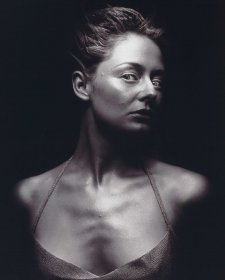Geoffrey Tozer (1954–2009), pianist, achieved national fame as a child prodigy in the 1960s. The son of pianist and musician Veronica Tozer, he was born at a hill station in the Himalayas and lived in India until the age of four. At nine, he played Bach’s Concerto in F Minor with the Melbourne Symphony Orchestra, and at ten, he played Haydn’s Concerto in D major at the Myer Music Bowl. The youngest-ever recipient of a Churchill Fellowship, which he gained at thirteen, he proceeded to perform around the world, winning the Rubinstein medal in 1977 and 1980. Tozer was living in Canberra, teaching music at St Edmund’s College, when the then-Treasurer Paul Keating heard him play. His brilliance inspired Keating to establish the Australian Artists’ Creative Fellowships. Through Keating, Tozer was introduced to the head of Chandos Records in the UK; he subsequently recorded Medtner’s piano works for the label. The only Australian yet nominated for the Best Classical Performance Grammy (in 1992), he won the Diapason d’Or that year and the Gramophone Critics’ Recording of the Year award in 1997. Keating’s support of the artist attracted malicious local comment and Tozer last performed with a major Australian orchestra in 1996. Subsequently, he amassed numerous international performances, including a performance of the Yellow River Concerto in China which was broadcast live to some 80 million viewers. His career declined after 2006, as did his health.
Rollo Thompson, a member of Melbourne’s smart young set, began painting in the mid-1920s and exhibited flower pieces and portraits regularly from the 1930s, when she had her studio in the ballroom of Cloverdale House, Toorak.
Collection: National Portrait Gallery
Gift of the Estate of Geoffrey Tozer 2012
The National Portrait Gallery respects the artistic and intellectual property rights of others. Works of art from the collection are reproduced as per the
Australian Copyright Act 1968 (Cth). The use of images of works from the collection may be restricted under the Act. Requests for a reproduction of a work of art can be made through a
Reproduction request. For further information please contact
NPG Copyright.













